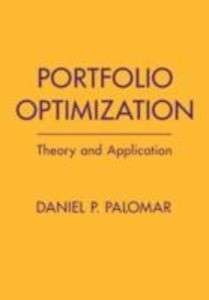
Zustellung: Mi, 14.05. - Sa, 17.05.
Noch nicht erschienen
VersandkostenfreiBestellen & in Filiale abholen:
This comprehensive guide to the world of financial data modeling and portfolio design is a must-read for anyone looking to understand and apply portfolio optimization in a practical context. It bridges the gap between mathematical formulations and the design of practical numerical algorithms. It explores a range of methods, from basic time series models to cutting-edge financial graph estimation approaches. The portfolio formulations span from Markowitz's original 1952 mean-variance portfolio to more advanced formulations, including downside risk portfolios, drawdown portfolios, risk parity portfolios, robust portfolios, bootstrapped portfolios, index tracking, pairs trading, and deep-learning portfolios. Enriched with a remarkable collection of numerical experiments and more than 200 figures, this is a valuable resource for researchers and finance industry practitioners. With slides, R and Python code examples, and exercise solutions available online, it serves as a textbook for portfolio optimization and financial data modeling courses, at advanced undergraduate and graduate level.
Inhaltsverzeichnis
Preface; 1. Introduction; I. Financial Data: 2. Financial data: stylized facts; 3. Financial data: IID modeling; 4. Financial data: time series modeling; 5. Financial data: graphs; II. Portfolio Optimization: 6. Portfolio basics; 7. Modern portfolio theory; 8. Portfolio backtesting; 9. High-order portfolios; 10. Portfolios with alternative risk measures; 11. Risk parity portfolios; 12. Graph-based portfolios; 13. Index tracking portfolios; 14. Robust portfolios; 15. Pairs trading portfolios; 16. Deep learning portfolios; Appendices: Appendix A. Convex optimization theory; Appendix B. Optimization algorithms.
Produktdetails
Erscheinungsdatum
30. April 2025
Sprache
englisch
Seitenanzahl
550
Autor/Autorin
Daniel P Palomar
Verlag/Hersteller
Produktart
gebunden
ISBN
9781009428088
Entdecken Sie mehr
Bewertungen
0 Bewertungen
Es wurden noch keine Bewertungen abgegeben. Schreiben Sie die erste Bewertung zu "Portfolio Optimization" und helfen Sie damit anderen bei der Kaufentscheidung.









